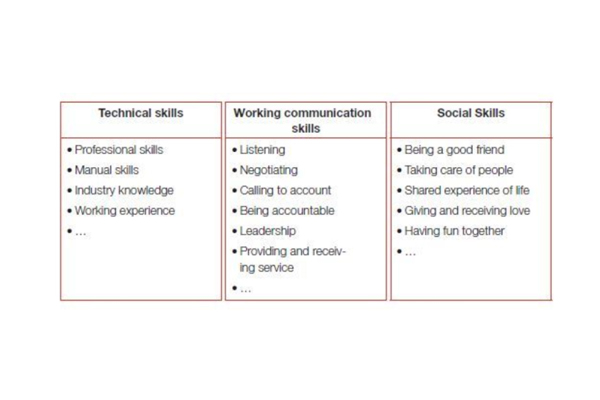We all know our technical skills – the ones we spent years studying, training for, and refining. These are the qualifications on your CV, the tools of your trade. And then there are social skills – the way you connect, listen, and navigate relationships. These you probably picked up along the way, absorbing what worked and leaving behind what didn’t.
But there’s a third set of skills that often gets overlooked, and it’s the one that can make or break your success as a leader: working communication skills.
What Are Working Communication Skills?
These aren’t the casual, day-to-day social skills you bring to dinner with friends. They’re not technical expertise either. Working communication skills sit at the heart of professional relationships, helping you lead with clarity, build trust, and ensure your team is aligned and productive.
Mastering these skills can elevate your leadership, improve team performance, and even make your work life more satisfying. Yet, many of us don’t even realise they exist, let alone actively work on them.
The Key Difference: Work Mode vs. Friend Mode
Ever found yourself in a situation where a work conversation turned awkwardly personal – or vice versa? The problem usually lies in blurred boundaries. At work, you need to clearly distinguish between “friend mode” and “work mode.”
- Friend mode is about bonding, sharing, and enjoying time together.
- Work mode is about purpose, efficiency, and achieving goals.
Both are valuable, but when they mix, confusion arises. You might unintentionally upset a team member by being direct when they expected a friendly tone, or waste time on casual chats when you need to focus.
How to Master Working Communication as a Leader
Building strong working communication skills starts with understanding – and respecting – these boundaries. Here’s how to apply this mindset to your leadership:
1. Be Clear About the Mode You’re In
If you’re in work mode, say so. It might feel a bit formal at first, but it avoids misunderstandings. For example:
- “I can’t chat now; I’ve got work to finish. Let’s catch up after hours.”
- “Let’s stop talking about work – it’s family time.”
Being explicit keeps everyone on the same page.
2. Learn to Say ‘No’ – And Accept It Too
Respect each other’s boundaries. If a colleague wants to chat but you’re focused on work, politely decline. Equally, if someone says no to socialising because they’re in work mode, don’t take it personally.
3. Separate Work Talk from Social Spaces
Work conversations belong in the office, not at the pub or lunch table. Mixing the two can send mixed signals. Save social spaces for bonding and keep work discussions professional, at least until you’ve both mastered the art of signalling clearly which mode you’re in.
4. Minimise Casual Chat at Work
Friendly conversations are great for team morale but should be short and mindful of the work environment. Keep it to breaks or after work to avoid disrupting people’s focus.
5. Don’t Become a Shoulder to Cry On
As a leader, it’s easy to slip into the role of counsellor, but this crosses boundaries. Provide immediate support during a crisis, then direct people to professional resources for longer-term help.
6. Focus on Fairness Over Friendliness
Your job isn’t to be liked; it’s to lead. That means being fair, objective, and clear in your communication. Kindness is always welcome, but it shouldn’t come at the expense of clarity or accountability.
Why This Matters for SME Leaders
In SMEs, relationships are often closer and more personal than in larger companies. That’s a double-edged sword. While a strong sense of camaraderie is great, unclear boundaries can lead to confusion, frustration, or even resentment.
By mastering working communication skills, you create a culture where:
- Conversations are clear and purposeful.
- Boundaries are respected.
- Both work and social relationships thrive in their proper spaces.
Start Building Your Working Communication Skills Today
Good communication isn’t just about getting along; it’s about ensuring your team is aligned, productive, and moving in the right direction.
Which of these tips resonates with you? Are you already using any of them in your leadership style? Share your thoughts in the comments – I’d love to hear how you’re navigating this balance in your SME.
#Leadership #SMEs #CommunicationSkills #WorkLifeBalance #TeamManagement
